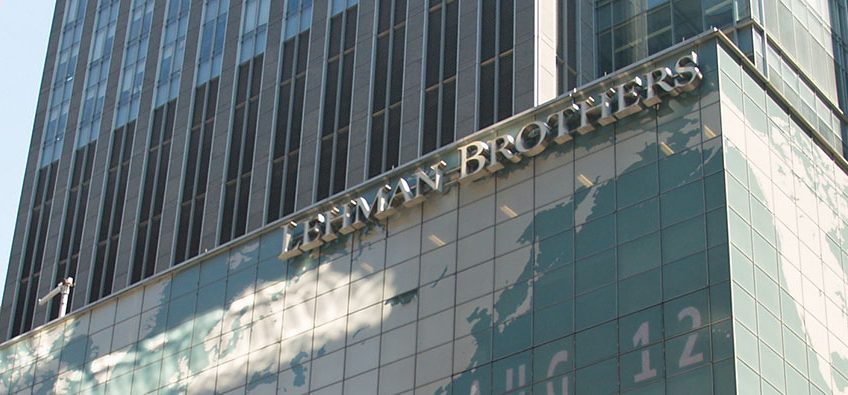
Teetering on the Brink

What Have We Learned from Investment Bank Failures like Lehman Brothers and Bear Stearns?
If you wanted to watch the world economy collapse into a nightmare depression of currency failures and bankruptcy, you would start by looking for the failure of a major financial institution.
And when that happens, you would be glad to own gold.
Few people today know of the 1931 failure of Credit Anstalt, the Viennese banking giant founded by the famous Rothschild family of international financiers. The conventional wisdom was that Credit Anstalt was impregnable. When the bank teetered and fell, shockwaves were felt across Europe and around the world. The ensuing panic made the Great Depression a worldwide calamity.
Not everyone was blind to the unsound practices that brought Credit Anstalt to its knees. Seeing that it was actually bankrupt, the great free market economist Ludwig von Mises refused several executive positions with the bank. It is said that when Mises would walk down the street by the bank’s huge building edifice, he would tap it with his umbrella, saying, “You’ll be coming down soon!’
The failures of Bear Stearns and Lehman Brothers, the fourth largest investment bank in the United States, ushered in the Panic of 2008 and the bursting of the mortgage bubble.
In each of these examples, central bankers and government authorities quietly scrambled to provide liquidity and bailouts to the so-called “too big to fail” banks.
Now the Federal Reserve has begun moving a monetary heaven and earth of liquidity into the banking system to deal with issues that are shrouded in mystery.
We don’t claim any special insight or inside knowledge about what may be underway, but we have a good alarm system that tells us all these Fed machinations mean something is up in the financial world. Back in July we asked if Germany’s Deutsche Bank could be ‘the key log in the log jam.”
“That’s the log that, once moved, sets the whole destructive torrent of all the other logs loose to destroy everything downstream in their path,” we wrote.

At that time Deutsche Bank announced it was cutting 18,000 jobs; its share price cratered. A week later we reported that its clients were pulling a billion dollars a day out from Deutsche Bank.
We’re not the only ones wondering if all this hyperactive Fed money printing is an attempt to “paper over” problems cascading down from Deutsche Bank. MarketWatch reported in the summer that the bank had created a book of $53 trillion in derivatives instruments, although the bank claimed its own exposure was only $22 billion; we take that with a grain of salt having heard understatements of their own exposure from the banks last time around . Last month Deutsche Bank invited bids to auction off some of its interest rate derivative contracts.
Deutsche Bank may not be the next Credit Anstalt, or Bear Stearns or Lehman. It’s just as likely, perhaps even more so, that the US government’s voracious borrowing appetite is running into supply troubles. Perhaps Deutsche Bank’s troubles are simply pulling the curtain back on something larger. We say larger because the Fed’s latest liquidity measures and Quantitative Easing are huge. It appears that a backdoor bailout is underway somewhere.
In any case, something is amiss. Something big.
Buy gold.
And stay tuned.
